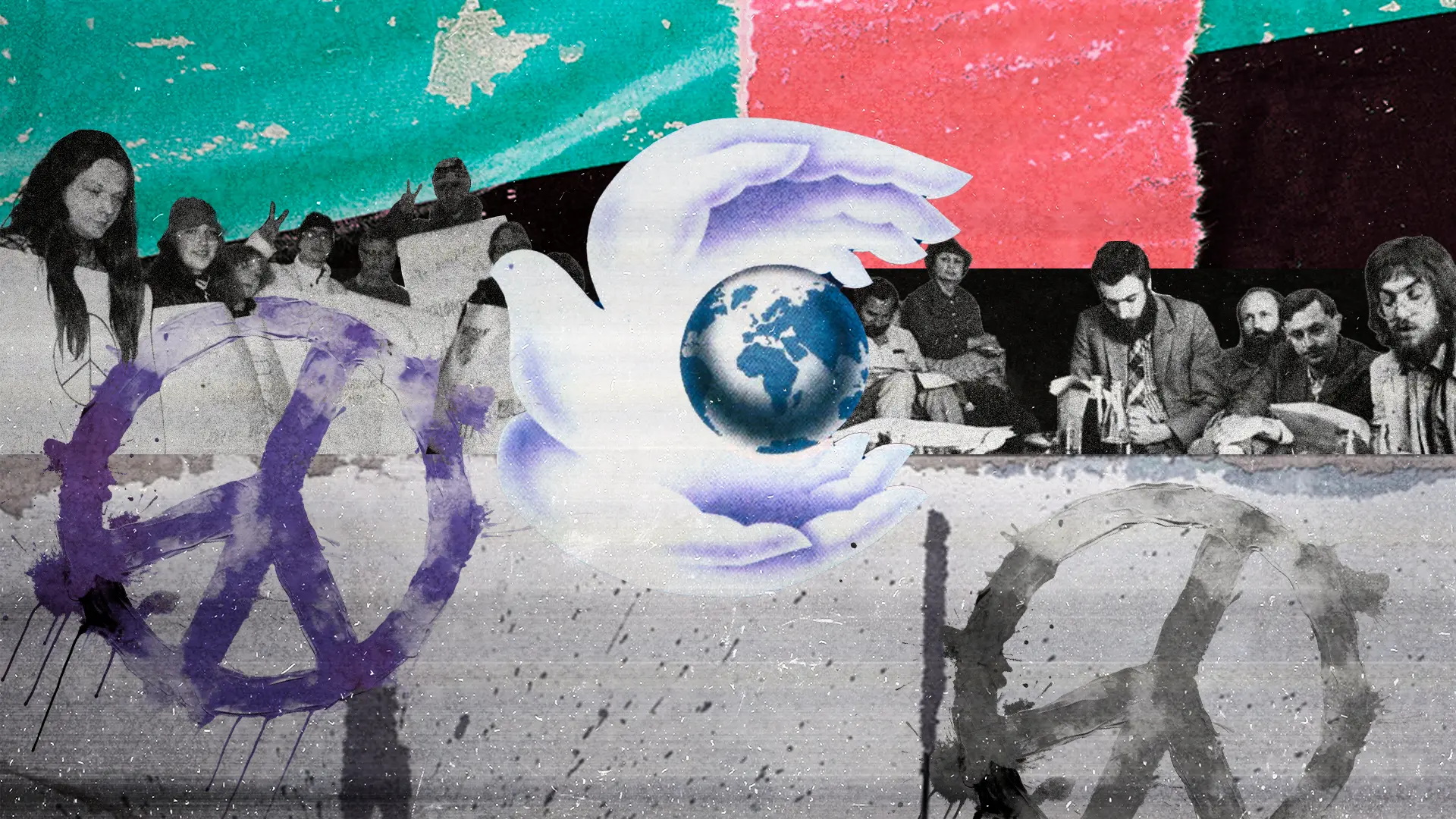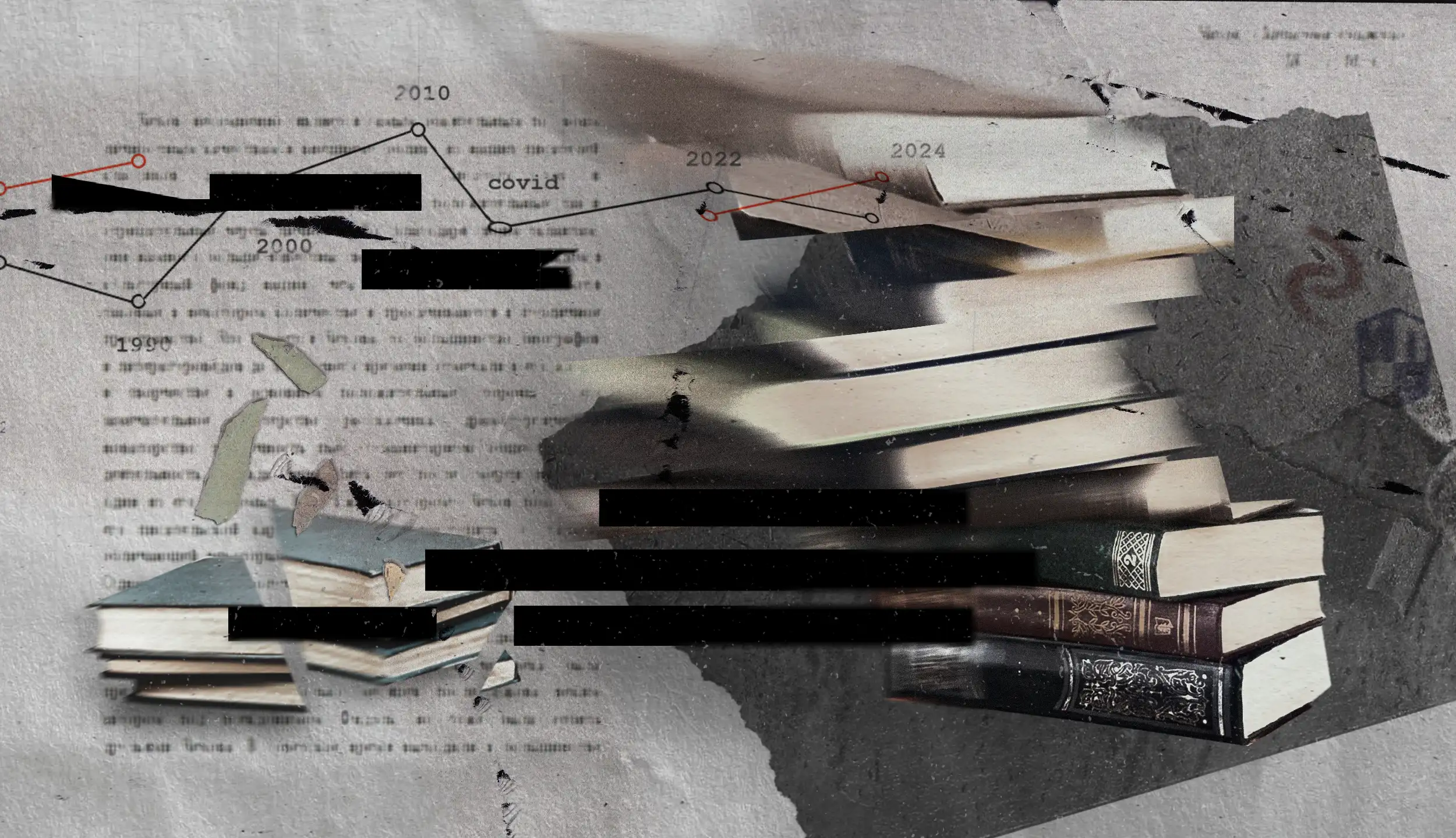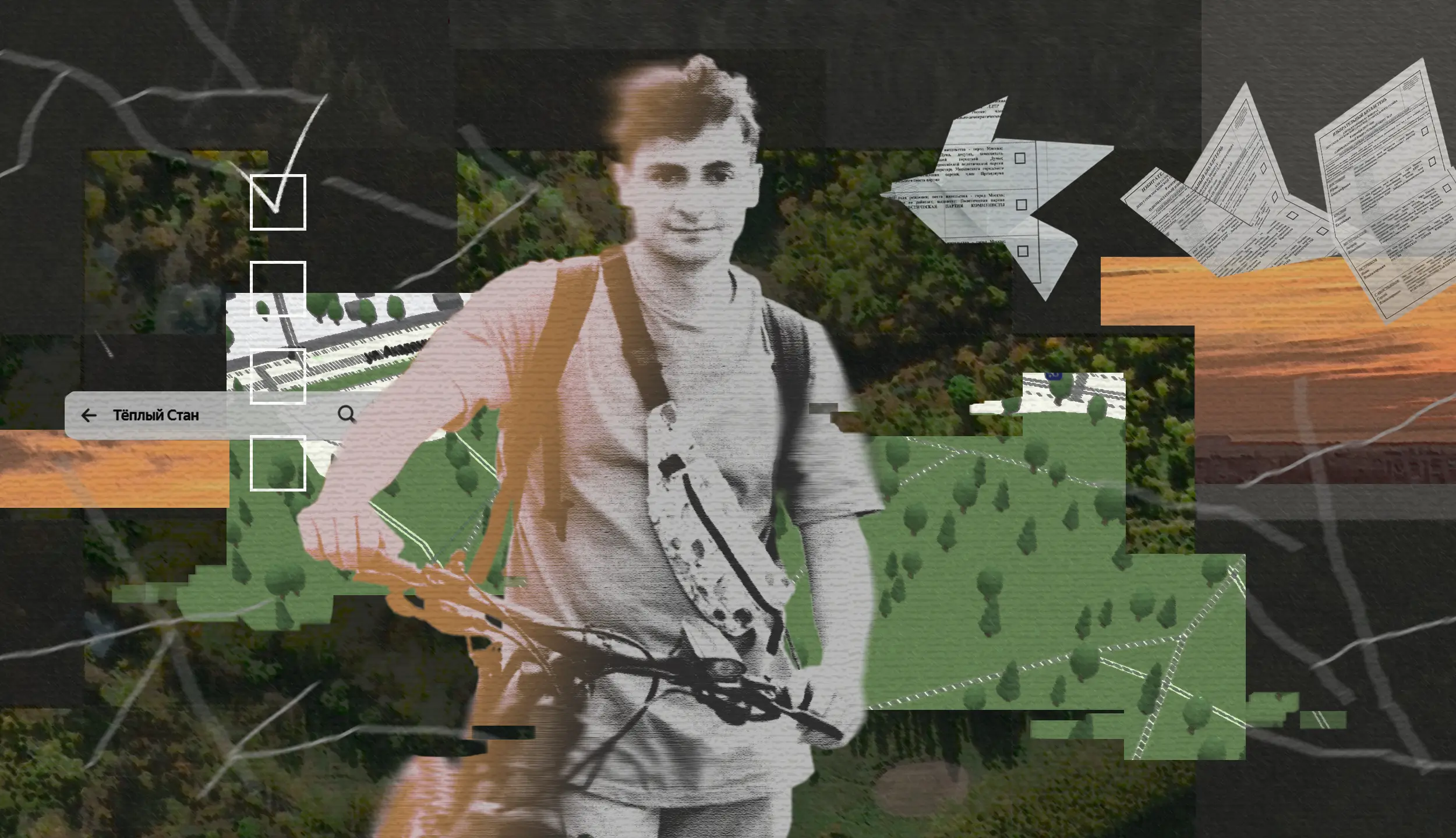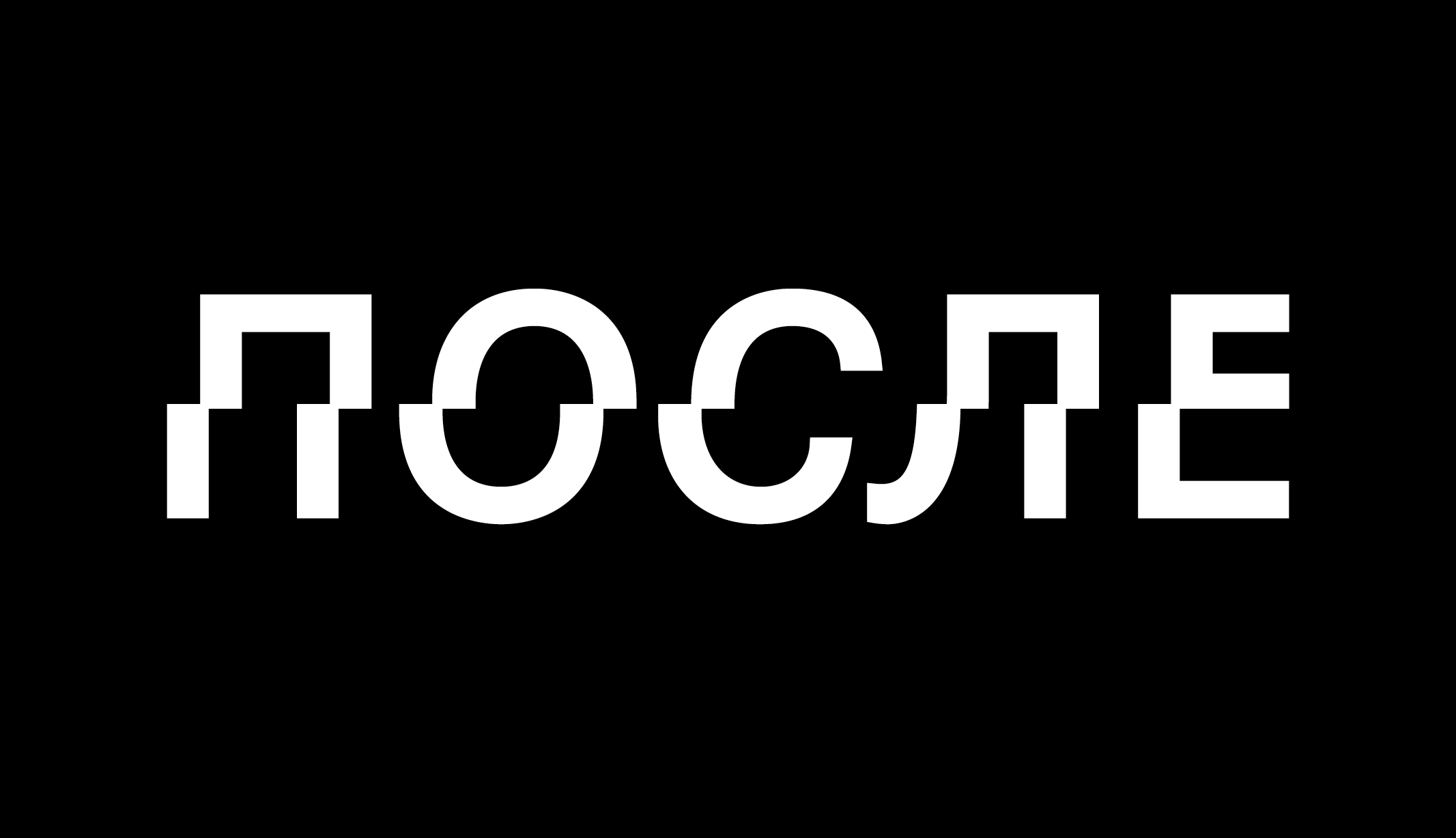Moral condemnation of war as senseless mass murder, for which the ruling elites are responsible, has accompanied all the bloody wars of the 20th century. This idea inspired both conscientious objectors and those who turned those arms against the warmongers. After World War II, pacifism inspired by Christian tradition as well as the legacy of Tolstoy and Gandhi, had an enormous impact on the mass movement in the West against the Vietnam War. However, pacifism also existed in the USSR. And it constantly questioned the sincerity of the Soviet government’s official peace-loving rhetoric. In her historical overview, Irina Gordeeva shows that, despite its limited influence, the pacifist movement in the USSR remains important in today’s Russia. It serves as an example of resistance to militarism and government hypocrisy.
Stalin’s Great Terror destroyed the last of the Tolstoyan communities in the Soviet Union. For thirty years, this radical pacifist movement had actively participated in the resistance against unfreedom in the Russian Empire and the USSR. It also served as a prominent influence on the transnational religious-anarchist movement. With the departure of the Tolstoyans, the pacifist movement ceased to exist for several decades.
The Soviet “struggle for peace” during the Cold War alienated ordinary people. This official peace movement comprised of a multitude of Communist party-, government-, and KGB-controlled “public” organizations (the Soviet Committee for the Defense of Peace (SCDP) and the Russian Peace Foundation chiefy among them) suppressed all independent initiatives. The struggle for peace remained in everyone’s memory a “dreary and dull hypocricy.”
Dissidents and human rights activists often opposed violence, but they did not seriously nor systematically address antimilitarism or nonviolent protest. The pacifism of Sakharov and Solzhenitsyn disseminated among a narrow intellectual milieu. But no attempt was made to turn them into a platform for a social movement. Only one of the shestidesiatniki, Yuri Galanskov, called himself a pacifist. He worked to create a grassroots transnational organization — the World Union of Supporters of Complete and General Disarmament. He believed that the emergence of such a body in a state with a military-police system could break the Communist Party’s monopoly on peace associations and lead to an increase in the political activity and ideological independence of Soviet people.
The Soviet independent peace movement emerged in 1982 after a long gestation in the cultural underground and dissident movement. It was represented by the “Group to Establish Trust Between the U.S.A. and the U.S.S.R.” (the “Trust Group”, later known as the “Between East and West” group) and the “Free Initiative” group. These small organizations became part of an unofficial peace movement that developed the late 1970s in Eastern Europe. This movement attempted to break the link between an empty “official” and a true struggle for peace and add new content through an autonomous, freely expanding agenda and pacifist values.
The Trust Group insisted on its right to act publicly and independently from the state. Its founders proposed to fight the threat of nuclear war through “people-to-people diplomacy.” That is, by establishing contacts between ordinary people from the Communinst and Capitalist Blocs without government mediation. This was an unexpectedly high-profile public bid to fight for the opening of Soviet borders and a more general relaxation of Soviet society, culture, and consciousness to the outside world. The group also insisted that the public should control foreign policy and “humanize” international relations. “Little brother is watching back” — this is how Sergei Batovrin, one of the founders of the Trust Group, paraphrased Orwell’s famous phrase, redirecting it at the state. The public controlled power “from below”.
Soviet authorities viewed the emergence of an independent movement as a real threat. Persecution began from the very first days of the group’s existence. The KGB followed members, raided their homes, tapped their telephones, and subjected them to house arrest and police summons. The police threatened and detained activists, had them fired from their jobs, and staged provocations against them in the streets. The KGB concocted administrative and criminal cases that resulted in the conviction of six people. Many were forcibly comitted to mental institutions. In addition, Soviet propaganda organs, and especially the Soviet Peace Committee, launched a campaign to discredit these independent peace activists.
Another independent peace group, the Free Initiative, was founded in Moscow alongside the Trust Group. Its leaders were representatives of the Soviet hippie community — Yuri Popov, nicknamed Diversant, and Sergei Troiansky among them. Diversant and Troiansky considered John Lennon, Tolstoy and Gandhi to be their ideological leaders. The first proclamation of the “Free Initiative,” “An Appeal to Young America,” was based on the idea of closeness between Soviet and American youth on the basis of aversion to violence and the embrace of pacifism.
In many ways, Diversant and Trojansky’s “Free Initiative” was an imaginary, social dreaming “game” that wasn’t actually realized. They dreamed of creating, based on Sistema (the self-identifying term of the Soviet hippie community), a real pacifist movement in the spirit of Western counterculture. But, they couldn’t fully actualize this plan for many reasons. The Free Initiative’s radicalism compensated for its “virtual” nature, however. Thus, one of its main aims was to protest against the war in Afghanistan.
In 1983, the Free Initiative held its first and last street protest action. In her article on the Soviet society’s attitude towards the war in Afghanistan, Soviet dissident Lyudmila Alekseeva called this protest “the only organized attempt to resist this war”. On 1 June, which is officially recognized as Internaitonal Children’s Day, and which Moscow hippies considered Hippies’ Day, the Free Initiative distributed leaflets with their calls for the abolition of the death penalty and for an end of the war in Afghanistan in Moscow’s Tsaritsyno Park. The police and the KGB raided those hippies celebrating their holiday, and detained several dozen people. The police charged Diversant with drug possession without intent to sell and placed him in a prison-type psychiatric hospital for five years. Trojansky remained at large until October 1986. He took part in the activities of the Trust Group and wrote leaflets on behalf of the Free Initiative, which were distributed at the John Lennon memorial rallies Beatlemaniacs held on Leninskiye Gory.
Why an independent peace movement emerged during the worst years of stagnation, or the period of almost total suppression of the dissident movement, is first and foremost a question about the motives of its participants. Who were these people? What did they expect when they created their group at a time when all independent initiatives were crushed? The Soviet independent peace movement had a complex, paradoxical social base, comprising of activists from very different socio-cultural backgrounds. All of them obviously occupied the margins of Soviet society. And their cultural baggage, life experiences, goals and motives varied and ranged from sincere idealism to outright cynicism. Yet, these hippies, scientists, refuseniks, artists, disabled people, parapsychologists, persecuted religious believers, simple humanists and adventurers all shared common values: of open society, of non-violence and of the belief that people can change the existing system for the better. Small circles of these marginalized people were transformed into drivers of social activism by the power of political imagination and transnational solidarity.
Additionally, the “global” imagination of Western hippies and the New Left played a special role in the emergence of the Soviet independent peace movement. Western pacifist and neo-Marxist ideas captured the minds of some Soviet youth in the 1970s. These ideas were vividly manifested in the activities of Soviet independent peace movement activsts like Sergei Batovrin, Yuri Popov, Sergei Trojansky and Alexander Rubchenko. They took the ideas and values of these Western movements to heart and saw their activism as a continuation of the sacred history of the Western counterculture. Popov, Trojansky, and Rubchenko also tried to combine hippie ideals with the Russian anarchist and Tolstoyan traditions.
Even though the Soviet hippie community was very apolitical, it dreamed of playing a public role through colorful street actions to show that “we hippies exist.” Not unlike their Western sympathizers who regularly took to the streets to protest the war and police violence. The most famous Soviet hippie action was the attempted anti-Vietnam War protest that took place in Moscow on June 1, 1971. It ended with the detention of several hundred people. This failed protest became the centerpiece of the historical myth of the Soviet hippies. And the Free Initiative group inserted itself in it.
Transnational solidarity was central to the political imagination of the Soviet independent peace movement since its inception. After the first articles about the Trust Group appeared in the foreign press, letters protesting the persecution of the group’s members flowed into the Soviet Peace Committee. Dozens of foreign peace activists who visited the USSR considered it their duty to get acquainted with the participants of the unofficial peace movement. Peace activists, human rights activists, and journalists published articles about the Soviet pacifists, wrote reports about them and organized performances at international peace and human rights forums and held demonstrations in their defense.
Peace groups belonging to the “neutral” strand within the anti-nuclear movement were particularly keen on showing solidarity. Thus, in the spring of 1980, many of them united around the Appeal for European Nuclear Disarmament. This document was authored by E. P. Thompson, the famous British Marxist historian and social activist, Ken Coates, a trade union activist and head of the Bertrand Russell Peace Foundation, Mary Kaldor, an expert at the Stockholm International Peace Research Institute, among others. The proclamation began with the assertion that humanity had entered the most dangerous stage of its history where World War III was not just possible, but highly probable. The authors placed equal responsibility for the current situation on NATO and the Warsaw Pact and called on peace activists to unite in the fight against Soviet SS-20 missiles and the American Pershing II and cruise missiles.
The most resonant statement in the Appeal was its call for solidarity and joint protest action: “We must defend and extend the right of all citizens, East or West, to take part in this common movement and to engage in every kind of exchange… We must commence to act as if a united, neutral and pacific Europe already exists. We must learn to be loyal, not to ‘East’ or ‘West’, but to each other, and we must disregard the prohibitions and limitations imposed by any national state.” The appeal had a powerful emotional and intellectual impact on the global peace movement. It generated responses from hundreds of peace activists who rallied around the European Nuclear Disarmament and began to call themselves the Détente from Below movement. They supported the independent peace movement in Eastern Europe, hoping that it would become one of the pockets of independent civil society that would eventually end the totalitarian regimes in their countries, and thus the Cold War.
Many of the Proclamation’s authors combined social activism with scholarly research. They drew inspiration from a genuinely new way of looking at the East-West rivalry as a historical process that could be changed by Europeans themselves. Thompson was not just a theorist and practitioner of the New Left movement and an anti-nuclear activist. He was also a world-renowned historian and a founder of the British “new social history,” that is, a history “from below” that affirmed the subjectivity of ordinary people. Mary Kaldor introduced the concept of “global civil society” that is common in the study of global social processes and transnational movements today.
Soviet activists adopted the actual language of protest from their foreign counterparts, learned to navigate the modern peace movement, and mastered non-violent methods of struggle. They expanded their agenda to include such concepts as direct action, nonviolent methods of struggle, civil disobedience, conscientious objection, etc. Thanks to foreign peace activists, the members of the Trust Group discovered the world of international solidarity. And the solidarity actions of foreign peace activists provided their Soviet counterparts with moral support and publicity that reinforced their transnational identity and mitigated persecution. Henceforth, they saw themselves not as a small group of persecuted dissidents, but as part of a powerful global grassroots peace movement.
Despite repression and the eventual emigration of many activists between 1982–87, the Trust Group collected ideas for building trust between the USSR and the USA, held peace seminars, wrote letters and appeals to public and government officials, organized anti-war exhibitions, and prepared street actions. Over time, the group’s agenda included human rights and environmental issues that were absent in their original vision. It underwent an ideological evolution from an anti-nuclear to a real pacifist group that linked peace and human rights, placed non-violence at the center, struggled against the militarization of consciousness and economy, contientoius objection to military service, alternative civilian service and anti-war education of children. By the beginning of Perestroika, the Trust Group had acquired vast and unprecedented experience in open socio-political protest, human rights activism and transnational solidarity unprecedented for the late Soviet era. It was the only group whose members acted openly as early as in 1982–87, were not afraid to take to the streets and were able to organize street actions.
In 1987, a grassroots revolution took place in the USSR. Soviet neformaly and former dissidents adopted the agenda and protest practices of the independent peace movement. “Official” peace organizations, seeking to “rebuild” in the spirit of the “new thinking,” directly borrowed the Trust Group’s ideas and those of the transnational peace movement.
The role of these groups in the history of perestroika and the reasons for the almost complete disappearance of nonviolence movements in Putin’s Russia are still unexplored due to the underdevelopment of the peace studies in Russia. Nevertheless, it is already possible to agree with Gillian Wylie, a contemporary researcher of peace and nonviolence movements, who believes that their existence is a symbol of hope for the possibility of an alternative arrangement of social and international relations. These movements encourage us to believe that the solidarity of people inspired by better ideals can change the existing system for the better.
You can learn more about Soviet hippies and the Vietnam war protest from the episode “Soviet Flower Power” of the podcast Eurasian Knot.







